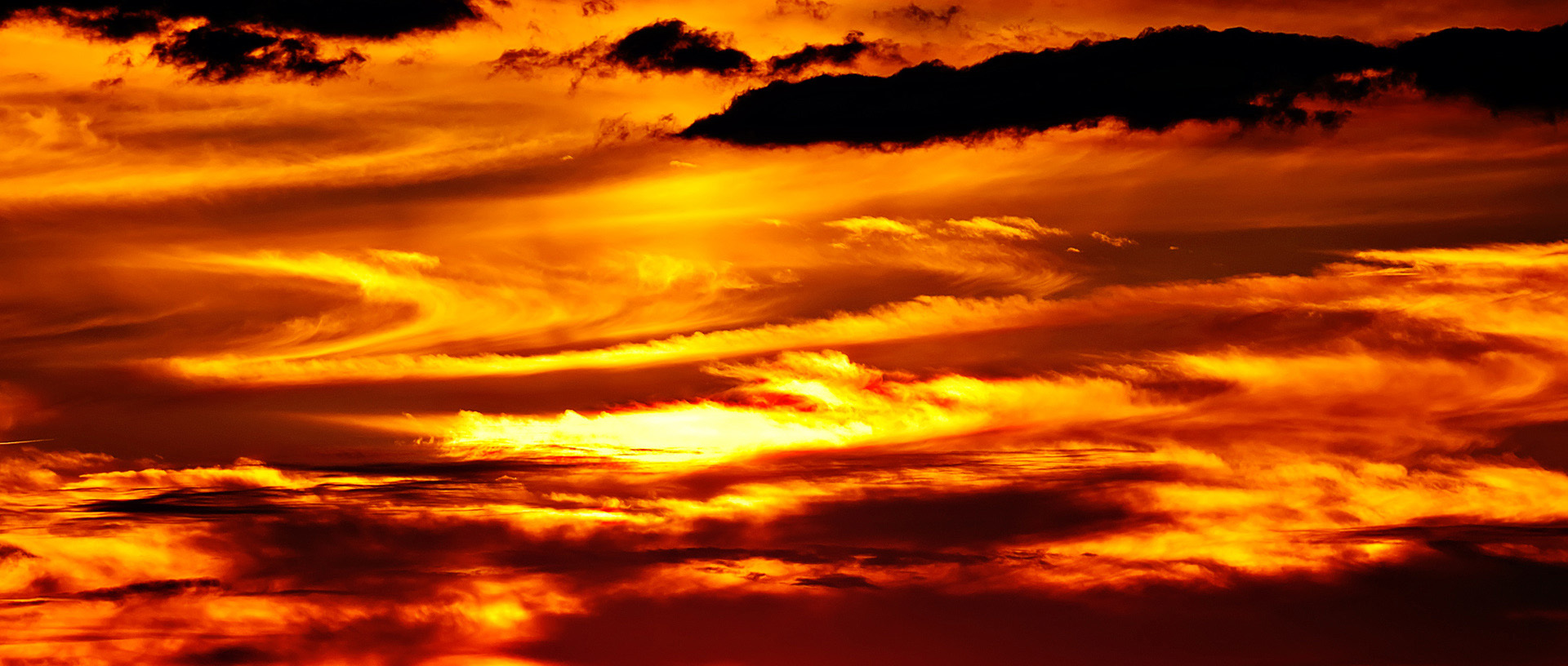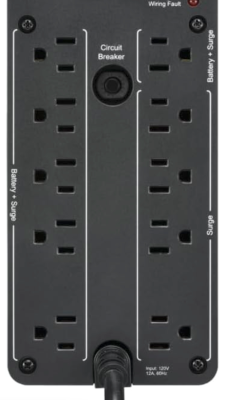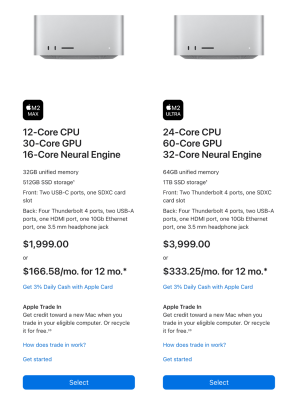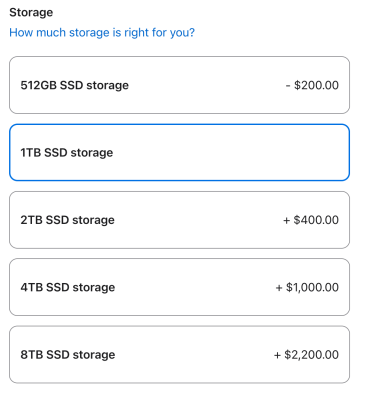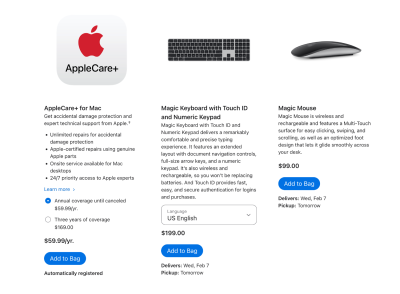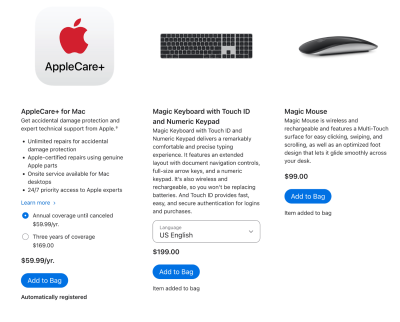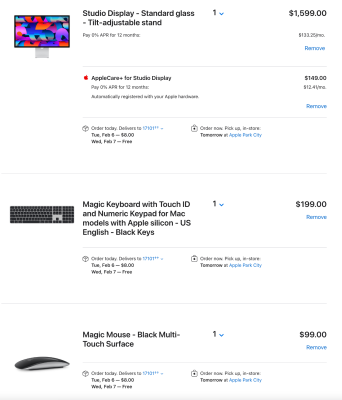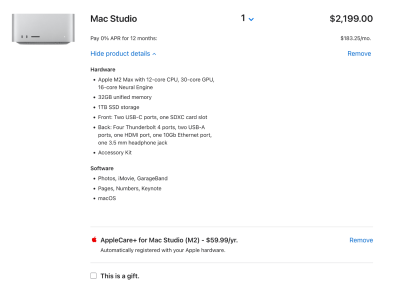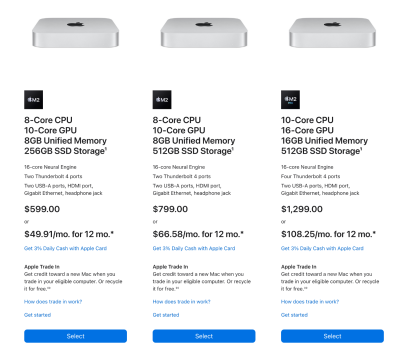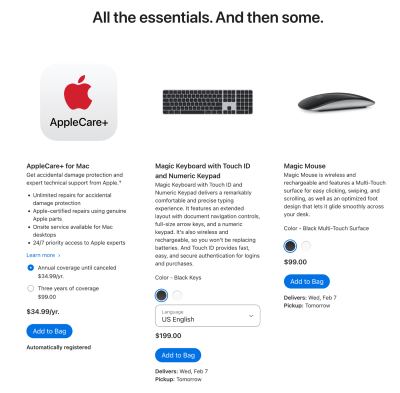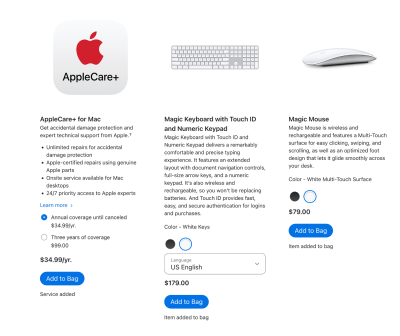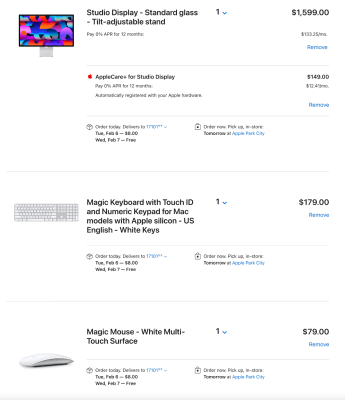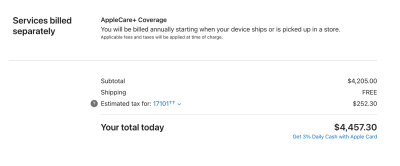-
Posts
4,098 -
Joined
-
Last visited
-
Days Won
51
Everything posted by Brian
-
The DisplayPlus HL has more features than the basic one, is on par with your old calibration device, but isn’t way overkill like the Calibrite HD model. These round of calibration devices are current, not like the nearly 8 year old tech of your old Calibrator when you bought it.
-
The amount of features and the amount of colors it sees. While a lower cost model, (and I get why you’d want to save money,) would work fine for your current 2019 display, it may not work well, if at all, with a future display panel type. Here is a video explaining the differences:
-

Help with desktop-memory running low
Brian replied to CatherineL's topic in The Windows & PC Hardware Forum
Everything with computers is logical; input —> output. “Garbage In, Garbage Out.” I often hear the phrase, “I don’t know much about computers…” or “I’m technologically stupid,” and the “I never went to school…” You know who else didn’t go to school for this stuff? ME. Home Computers have been around since the early 1980’s. Some would argue and say earlier, and they would technically be correct, but I remember 1981-1983 is when a lot of homes got them. I was exposed to them in that era. That’s where I started to learn, and that’s the trick…you need to be open to learning. Fiddling around, screwing something up and then figuring out how to undo what you did. The trick is to remember what you did. So start learning and stop making excuses. -
Yep, Damien is right. No new Photoshop for you! The latest version does not like your video card and/or its drivers. Stay on PS CC 23, and start saving for a new laptop.
-
Eventually both you and i will be purchasing new Macs within the next 2 years. I'd be more worried about saving up for a new one than installing a new macOS...as tempting as it sounds. Believe me, I get it. The new macOS are really meant for the M1 / M2 / M3 Line of Macs, not the Intel-Based ones like we have. In my humble opinion...if we upgrade we are asking for weird problems to happen.
-

Help with desktop-memory running low
Brian replied to CatherineL's topic in The Windows & PC Hardware Forum
This is the part where Damien's eyes start to roll when he sees the Year / Month / Project Name file structure method. It is so subjective and depends on how your Brain works. I have a Main External HD, whose top file folders are broken down into this: From there I go into years Then break things down into projects. The goal is to be able to find something within 30 seconds, AT MOST. It should be second nature on how to find things. You could go one step further and have even better main folders, such as Business| Personal | Charity | Projects | Misc, then go from there. Treat each category as a single drawer in a file cabinet. From there you have to make the decision on the labeling and how your brain works. Most importantly... STICK WITH IT!!! The worst thing you can do is get sloppy and have "Junk Drawer" folders, where everything seems to get dumped into. That's fine if you are in a rush, but those files can't stay there; just like clutter around your Front Door (or wherever,) sooner or later you will need to put your coats & shoes away and to kill that junk mail that's piling up. Same difference. -
That's done on purpose. Unless you fork out the money to get a high-end laptop, you are replacing them every 18-24 months, at most. Even then you are on a 36 - 48 Month Lifespan. Yes...there are always exceptions, but laptops today are built cheap-cheap-cheap, all are "Made in China." They want you in the market sooner rather than later. Hell, if they could get you to buy one every year, even better.
-
I usually recommend the Dell XPS Series as a starting point. For example: Dell XPS Desktop That one basically checks all the boxes and gives you a really good starting point. The budget for a "Computer that's good for Photo Editing" will run you about $2500-ish. Here is a decent Monitor to go with it: Dell UltraSharp U2722DE 27" LCD Monitor. You will also have to budget for a Calibrator as well if you don't already have one or if it's about 5+ years old technology-wise, it's time for an upgrade.
-
Only a few years? Bummer. Keep in mind, whenever you see a Calibrator "On Sale," it means it's being discontinued, or a newer model is about to be released and they are clearing out stock. Lots of folks have developed a habit of buying things "On Sale," I am one of them, but when it comes to Calibrators, it's often the worst time to buy that particular model.
-
The i1Display Pro is from the Spyder 3 & Spyder 4 era, two other Calibrators that are no longer in use (or supported) with today's screens. I think that Calibrator was originally released around 2011? 2010? Something like that. It was "current" up until around 2014...and that's 10 years ago. I'd say you have had a good run.
-
Nope. I don't use Cloud Storage, as it's just "another person's computer." I can say that you really need to read the fine-print on the terms of your storage. Some require that a copy exists locally on your computer; if you do decide to delete those files, the terms will state that those files will automatically be deleted within 30 days. This keeps Cloud Storage from becoming "Dumping Grounds." Sometimes, there is a plan that doesn't do this, but obviously you'd probably be paying more than some sort of basic plan. BackBlaze seems to be one of the more popular ones, and honestly? I use Microsoft's One-Drive that's 1TB of storage when I do need something "Cloud" based.
-
Well, the bad news is, your calibration device has been orphaned by the manufacturer. There doesn't seem to be any updates software-wise and if the device is truly dead, now is the time to get a new one. It is possible that some sort of update could have been pushed through and your device doesn't like it, or it could have just died. Things happen. This Calibrator, Calibrite Display Plus HL (CCDIS3PLHL) should be the modern equivalent to what you have and is on my short list.
-
Are you looking for a Desktop going forward or a Laptop? It boils down to this for a Desktop: Latest version of the Intel i7 or i9 CPU 32GB RAM / 64GB Preferred 1 TB Main HD NVIDIA RTX 4070 or RTX 4080 with at least 8GB of Dedicated Video RAM. (more is always better.) Also you could use a AMD equivalent if you prefer. Power Supply to support everything, I usually recommend 850 Watts at this point going forward. But I have seen people use 650 Watts or 750 Watts too, it really depends on your motherboard and how far you want to push things. I also recommend a APC UPS 1500VA Sine Wave UPS Battery Backup • BR1500MS2 IPS (In-Plane Switching) Display with at least 95% or better sRGB Coverage. Every time I try building something, I always end up at the $3000 mark, just for the computer. I have expensive tastes.
-
You could go to Ventura...but honestly? Why? To take advantage of the new macOS features, you need a new Mac to go with the latest OS. If things are working, and you aren't all in a tizzy about the latest AI shit from Adobe...Photoshop is still Photoshop. Layers are Layers, Levels are Levels, etc.
-
Nothing is "wrong" with a Dell. I still recommend the Dell XPS series, even today. You have to keep in mind, that these type of computers are configured using parts that are great when they are put together; they work in harmony. Now you go and get a new Lead Singer, throw it in the Band without an audition, and things don't sound right. But it's a new Lead Singer!!! You still have slower existing components and as quickly as technology moves, you are asking a lot from your motherboard. Almost like you got a new fancy transmission with a better gear-ratio for racing...but if you don't have a big enough engine (still a 4 cyl) to give the power to that new transmission, you aren't going that much faster. Same difference. High Performance Computer Systems...it's all a balancing act. Granted you have a new Power Supply and Video Card...now you need the other stuff to go along with it. Like a faster/better Motherboard who has more data pathways to take advantage of what makes an NVIDIA RTX 4070 a RTX 4070. And a CPU to run things. And the RAM that's compatible with your CPU & Motherboard. And-and-and... Yep!! You purchased what you could afford...not what you NEEDED. There are reasons why I recommend the stuff that I do, and yes...they usually cost a lot more. But if you go bigger at the beginning, you are keeping the computer for a longer period. Gone are the days of the $999 Special from a Big Box Store that was "Good Enough" for Photoshop. As I've touched on in my article, Today's Modern Photoshop, you really need to focus on the "Whole Ecosystem" that supports your camera. You can't just "Wing it" with that cheap computer from Costco. Or Dell. Or HP. Or whatever. Photoshop, and with all of its new AI Crap/Bloatware, is really killing older computers, and I'm talking ones just from 3 years ago!! I really only recommend increasing RAM and HD capacity if one desires with a Dell XPS (or any other pre-built standard computer.) If you had a custom Gaming Computer that was built for you, things would tend to be "better," but given enough time, you'd still be in the same boat and have to buy a new one. As soon as you start installing major components, like a fancy Video Card, into a Dell computer, you are really pushing things. It's just the way it is. Yeah, if you are playing with brand new screens the ColorMunki is most likely not 100% compatible with the Display Panel. You paid the for the calibration software to work, but didn't take into consideration if you purchased a new display, the ColorMunki itself may not be compatible. Now if it's your same display that you have had all this time, then something's not right with the Calibration Software, and you might have to completely un-install it and then re-install things.
-
I would choose "Standard" or something along those lines. You want to get calibrated. Yes, even "if you have a Mac..." and use the profile that the Calibration Device creates and ignore what Apple gives you.
-
I had to look up Digibee. Never heard of one until now. It might be another version of the Alien Bee. Alien Bee lights are slow. The are almost a flash from like the 1800's, the "watch the birdie!!!" Fooompah!!! The light hangs around and that causes motion blur, since the flash duration is so long. That's why they came out with the Einstein Light. Basically the E640 is a "Fixed" Alien Bee light. Golden Rule of Flash: Aperture controls to Flash Power that's used. Shutter Speed (and ISO) controls to the Ambient Light. (But mostly Shutter Speed.) The quicker the flash duration, the more is "Frozen," even at slower shutter speeds. I also like using Rear Curtain Sync on my camera, it's WAAAY more forgiving. Basically, the flash fires off just before the 2nd shutter curtain closes, helping to freeze your subject. If you use Front Curtain Sync, the flash fires at the beginning of the shot, and then lets more ambient in and that can cause blur, especially if your lights are slow. I see that the Flash Duration is 1/1450 @ full power with the Digibee. You can't think like a Natural Light Photographer, that means you have a lot more power being thrown at your subject if you don't dial things down, which could be contributing things. Also, your camera's built in meter is COMPLETELY WORTHLESS when using an external light like a DigiBee or Alien Bee, or any other off-camera strobe. It's recommended to have a hand-held meter like a Sekonic to help you dial things in faster. It's been YEARS since I've messed with this stuff. I recommend trying to fiddle and freeze stuff with a toy that moves back and forth. Maybe something like a clock. Something straightforward, won't complain and get bored...and most importantly will stay in one place. Then fiddle with your lights and modifiers that you use. Keep in mind that a Modifier will eat a little light, and it varies to each one used. Alien Bees were also not known to be consistent. They would go all over the place in terms of power output if you made a change. So I'd fire off 4-5 test fires if you make a change to your light. My advice? Fiddle with the lower power settings on the DigiBee. See what 1/64 does or even 1/16th power. This should allow you to use wider apertures, provided you take the Inverse Square Law into consideration. You half or double the light power moving towards or away from your subject. So from 1-2 feet, you lose 1/2 the power. Then 2 to 4, then 4-8. Think of your subject sitting on a big dart board and they are in the center of the dart board, on the bullseye. The rings around the dart board are the distances. So that's why 4-8 feet away from your subject is the same light power and aperture. As soon as you move closer or further away, you need to make a change to either your Aperture Setting or Light Power Output. It doesn't matter where you stand, as long as you stay within that 4-8 feet area, the Aperture and Light Power Output stay the same. Make sense?
-
You need a new computer. If you put a big and powerful graphics card in a computer, along with a power supply, you need a better CPU chip and Motherboard to go along with it. It's all a balancing act. Plus, you have a Dell, not a high-powered gaming computer with a high-end motherboard. While your Dell worked "fine" with it's components, there was a reason that they were assembled together in the way they were. This isn't the 1990's anymore. Or early 2000's. You just don't buy a video card and call it good. I'm sure the fancy new NVIDIA Card you are using is being crippled by the Motherboard's speed. Before you ask, new motherboard, new CPU, new RAM, new case, etc. etc. You might want to look into a custom gaming computer and just have them put in a cheap video card that you can swap over to the new computer. Or even send them a the card. Or find someone locally who builds computers and can re-use the power supply and video card. Or your Husband can go to town and have some fun.
-
Interesting. It could be a cable issue if you got it to boot with another display. I have seen stranger things. Before condemning the monitor, try a different cable. At least the computer works with the new RAM. As for the video card and power supply, your husband has good taste. I would have bought the same things. well, maybe gone a little larger on the power supply, but the 4070 should work with a 650 watt p/s. One more thing, are you sure you have the power supply mounted correctly? It seems that when you put the case door back on, it's going to block the P/S Fan or am I mistaken?
-
Like what you read here? Did I help you make a decision or make things easier? How about buying Brian a Beer as a Thank You? Buy Brian a Beer!!
-
Honestly? I'd just tweak a few more things with my above Mac Studio Configuration: Upgrade the M2 Max Chip: Apple M2 Max with 12‑core CPU, 38‑core GPU, 16‑core Neural Engine Upgrade the RAM to 96GB of RAM I'd still choose 1TB of internal SSD Storage, and use a large External Thunderbolt 3 Hard Drive to store my images long term. Everything else, remains the same. The initial cost of the Mac Studio before AppleCare+ and Tax is $3199, which is $1000 more than the "Option B" configuration. Since I edit Photos only and never touch video, purchasing the high-end Mac Studio would be a waste of money. ANY of these configurations are a BEAST when it comes to Photoshop CC. Why 96GB? Because I have a Nikon D850 and tend to do large Panoramas at full resolution, so my files can get pretty large, (i.e. 4GB .psd files.) I also have run Virtual Computers with my Macs (Different Operating Systems that work off of "Slices" of my HD in different Windows,) so having extra RAM to be running 2-3 "Different" Computers on my iMac comes in handy, as I can give each of them 16GB of RAM to work with and still have enough for my macOS. Make sense? For you, 96GB is 99.999% overkill. For folks like me, it's typical. Hell, I could even fathom going up to 128GB at some point. But that's just me. Hands down, I would also be purchasing the Apple Studio Display along with $149 for 3 years AppleCare+ option for the Display and the $59.99/year AppleCare+ Subscription option for the Mac Studio. That's it. It's up to you if you want to fork out the extra $1000 for your situation to have the computer I'd purchase. If some of you are planning on using a old Power Strip / Surge Protector or a UPS (Uninterruptible Power Supply) from your old computer, please don't. Surge Protectors wear out over time, and become glorified "Extension Cords" protecting you from nothing. With UPS units, it's all a balancing act between the Volt Amp / VA Rating and Power / Current Draw which is usually referred to in Watts. The issue is that if there is too much power draw from your devices on a under-powered UPS unit, it will weaken the batteries and kill their lifespan dramatically. So even if you have a "new" UPS that's only a few years old, that fancy new Mac Studio setup that we just configured will overpower that UPS and give you a whole 1-2 seconds of runtime if the power goes wonky. So do yourself a favor and purchase a APC UPS 1500VA with Sine Wave Monitoring Technology to use with that new fancy Mac Studio that you just bought. While the UPS on your old computer works just fine, it may not have enough "umph" to keep up with your new fancy Mac Studio, so let's not take any chances. Keep in mind, that this UPS has a side that does "Battery + Surge" and a side that is "Surge Protector" only. You want your Mac Studio and Studio Display, along with any external Hard Drives plugged into the Battery + Surge side. The "Surge Only" outlets are for things you can afford to lose power on, such as external speakers and lamps / fans, plus things like a Laser Printer that draw A LOT of power. You never want to put a Laser Printer, even a small one, on a UPS Battery. Here is a photo of that UPS to demonstrate what I'm talking about: If your external devices use power bricks and won't fit properly next to each other in the UPS, feel free to pickup a Pack of Short Power Extension Cords to help things out. You plug the extension cords into the UPS, then the power Bricks into the other end of the extension cord. Where would I plug things in? After you connect the battery, (there are obvious instructions/yellow labels,) I would put the Mac Studio in the Top Right "Battery + Surge" plug and the Studio Display in the Top Outlet on the left side. Basically, you want the Mac Studio Computer and Studio Display located in the very top ports on both the left & right side. Then I'd use the Short Extension Cords and hook up my External Drives in the remaining Battery + Surge Outlets on the left. Then I hook my speakers, lamp and Laser Printer in the "Surge Only" outlets.
-
Notice how I keep saying over-and-over that Apple wants you to "Go Big or Go Home?" Or "You are penalized for attempting to save money." Here is a good example! We could have gone with Option A, which is a Tricked-Out Mac Mini, or spent a little bit more...about $43 more and went with a Low End Mac Studio. So what do you get for that extra $43? The slightly better M2 Max Chip, which has more CPU Cores (12 vs 10) and more GPU Cores (30 vs 16.) The Neural Cores are the same, both have 16 Core Neural Engines each. What is so important about the Neural Engines? AI Technology uses Neural Engines, so as we progress with AI over the years, this part of the CPU Chip will become more important. Support for up to FIVE external displays. 10Gb Ethernet vs 1Gb Ethernet Two additional USB-C Ports & one SDXC Slot (Located on the front.) Better cooling fan and airflow. Heat is the enemy of electronics. The cooler the electronics, in this case the M2 Max Chip, the better it performs. The downside to a Mac Studio over a Mac Mini? The Studio is physically larger in terms of height. So you might have to fiddle with its placement on your desk. That's it. For another $43, you are getting a WAY better computer. Plus, the M2 Max Chip with more GPU Cores will handle Photoshop CC 2024 with two Apple Studio Displays better. The downside? is you are purchasing two $1600 displays, which add to the cost. Bottom Line: If I had to choose between a Mac Mini and a Mac Studio for Photo editing, hands down I would pick the Mac Studio in 2024. Of course, this is me talking and I take things to "Eleven." If anyone has seen the 1984 Film, "This is Spinal Tap," knows the scene where the character Nigel Tufnel describes how his amplifiers go to "11." From Wikipedia: So how would Brian configure his Mac Studio and how would he make things "Go to Eleven?" Check out the next section...
-
Remember how I stated above, that there were TWO Computers that I considered that were "Good for Photo Editing?" Here is another configuration that is the same exact price, but comes with a few bonuses! Let's have some fun... First, head to Apple.com From there, click Mac at the top, and select Mac Studio Click the Blue "Buy" Button at the top right corner. Select the cheaper Mac Studio on the LEFT. That's right...the one on the LEFT. (Collective Gasp from the Audience.) Click the Blue Select Button under the $1999 Option. The only change you are going to make is to increase the Hard Drive Capacity to 1TB SSD storage. Here is what the current configuration should look like: The Price for this Configuration in the US is $2199, before AppleCare and Tax. We will click Continue... Add the Apple Studio Display with Standard Glass Select the standard "Tilt-adjustable stand." If you need your screen to be height adjustable, I'd rather you purchase a VESA Mount Adapter / VESA Arm and go that route than fork out the $400 for the over-priced Apple Stand. That said, if you just want the ability to adjust the height and not deal with a VESA Monitor Arm, then choose the $400 option; this will bring the cost of the Studio Display to $1999. For now, I'm sticking with the $1599 option. Apple will then ask you if you'd like to Add AppleCare+, click the blue Add on the right. The following screen will appear: Two choices. A flat three year or an annual subscription until cancelled. This is totally your decision. My gut reaction is to purchase the $149 / Three Year Option for the Studio Display. Most displays will die within the first three years. But if something happens in say...year 5, you are forking out the money for another Studio Display. Or you can opt to pay $49 annually for the Studio Display. Personally, since I keep my computers for long periods, I'd most likely choose the three year option for the Display for $149 and the annual option of $59.99 for the computer. Speaking of which, the following screen will appear: I would select the $59.99/yr AppleCare+ for the Mac Studio. Or you can pay the flat $99 for Three Years of Coverage. This is your call. For now, I'm choosing the $59.99/yr option. Remember, Apple is the ONLY one who repairs their stuff, well there are others, but Apple doesn't sell new parts to 3rd Party Vendors. Choose your AppleCare+ Option and click "Add to Bag." Now, if your current Apple Keyboard and Magic Mouse are working fine, you can save a little money here. Apple's Website doesn't offer the White Key Bluetooth Version of the Keyboard and Mouse. I know you can purchase both of these items separately and the White Key Version is about $20 Less over the Black Key Version. So do not feel oblicated to purchase a new Keyboard & Mouse. In fact, not only are they sold by themselves at the Apple Store, but I have seen them at places such as Target! For this example, we will add both a Keyboard and Mouse. Now it's time to review your bag. Here is what it should look like. Notice the $59.99/yr AppleCare+ that is attached to the Studio. If you see "Add AppleCare+" on this screen, you didn't properly add it (or likely the Apple Website screwed up,) so be sure to REVIEW EVERYTHING before clicking "Buy." Followed by the Studio Display and Keyboard / Mouse Options: The Sub-Total should be $4245.00 if you added everything that I recommended, along with the AppleCare+ Information. Then you have to add your local Tax. Shipping should be free. I would HIGHLY RECOMMEND shipping your new Mac to a local Apple Store if possible. No sense sending $4500+ worth of computer items to be stolen by Porch Pirates. I'd also have a store employee walk you to your car for added security. For those wondering how many displays can be used with this Mac M2 Pro Chip, here is the info from Apple: As you can see, with support for up to FIVE external displays, the Mac Studio is a better fit over a Mac Mini. When it's all-said-and-done, my final cost in my part of the World comes out to be $4499.70. Depending on your local Taxes & Fees, yours might be a little different. So let's round up to $4500-ish. The cost difference between a Tricked Out Mac Mini and a Standard Mac Studio is $42.40. If I went with the White Keyboard & Mouse instead of the Black Keyboard/Mouse Version, that's an additional $20 in savings making the cost difference between a Mac Studio and Mac Mini $22.40! This will be discussed in the next section.
-
First, head to Apple.com From there, click Mac at the top, and select Mac mini Click the Blue "Buy" Button at the top right corner. Start with the most expensive Mac Mini, which is the one on the right. Remember, if you opt to go with a lower priced Mac, not only are your choices limited, the upgrades cost more for the exact same item! So in the long run, if you want to "save" money, you need to "spend" more. (Yep, that's Apple.) In the US, this is $1299 model or the one in the right-most column in your part of the world: Click the Select Button in the Far-Right Column and let's change a few things. Keep in mind, as I've stated above...when it comes to Apple's products in 2024, THERE IS NO UPGRADING ANYTHING AFTER THE FACT AS EVERYTHING IS BUILT INTO THE M2 CHIP!!! Not only the CPU, but the RAM, HD Controller Chip, Video Card/GPU, etc. are all built into the M2 Processor Chip. Think of the current Mac products as a "Sealed Unit" or "Glorified iPads." If you want to "upgrade" anything down the line, you are buying a new computer. Period. Here are the things we will change/upgrade: Upgrade the Processor to the "Apple M2 Pro with 12‑core CPU, 19-core GPU, 16‑core Neural Engine" Upgrade the RAM to 32GB Upgrade the HD to at least 1TB SSD Storage. If there are ANY plans to upgrade your Internet to a 10GB Plan, then update the Ethernet to 10 Gigabit Ethernet for $100 more. This will require other things than just a computer upgrade, like a new Switch/Router, New DOCSIS 4.0 Modem, Cat 6 wiring, etc. 10Gig Internet really won't take hold until at least 2025 and even then it won't be available in most Markets. Chances are, you will leave this at the default, which is Gigabit Ethernet. I'm just letting you know so you can make an informed decision. For now, we will leave the Ethernet configuration alone. For Nerds like me who want this sort of thing, it's a no-brainer. But for the average person, 300Mbps Down is more than fine for today's Internet. Some parts of the world cap out at 50Mbps down, like Damien's Internet speed! So for now, the configuration looks like this: The Price for this Configuration in the US is $2199, before AppleCare and Tax. We will click Continue... Add the Apple Studio Display with Standard Glass Select the standard "Tilt-adjustable stand." If you need your screen to be height adjustable, I'd rather you purchase a VESA Mount Adapter / VESA Arm and go that route than fork out the $400 for the over-priced Apple Stand. That said, if you just want the ability to adjust the height and not deal with a VESA Monitor Arm, then choose the $400 option; this will bring the cost of the Studio Display to $1999. For now, I'm sticking with the $1599 option. Apple will then ask you if you'd like to Add AppleCare+, click the blue Add on the right. The following screen will appear: Two choices. A flat three year or an annual subscription until cancelled. This is totally your decision. My gut reaction is to purchase the $149 / Three Year Option for the Studio Display. Most displays will die within the first three years. But if something happens in say...year 5, you are forking out the money for another Studio Display. Or you can opt to pay $49 annually for the Studio Display. Personally, since I keep my computers for long periods, I'd most likely choose the three year option for the Display for $149 and the annual option of $34.99 for the computer. Speaking of which, the following screen will appear: I would select the $34.99/yr AppleCare+ for the Mac Mini. Or you can pay the flat $99 for Three Years of Coverage. This is your call. For now, I'm choosing the $34.99/yr option. Remember, Apple is the ONLY one who repairs their stuff, well there are others, but Apple doesn't sell new parts to 3rd Party Vendors. Choose your AppleCare+ Option and click "Add to Bag." Now, if your Apple Keyboard and Magic Mouse are working fine, you can save a little money here, about $258 for the White Key Version and about $298 for the Black Key Version. If you want to go the "Full Monty" and get everything new, add the Keyboard and Mouse. If adding to bag, make sure you choose the color that you want, there are TWO options now. For me, I like the White Keyboard and Mouse so that's what I'm adding: Now it's time to review your bag. Here is what it should look like: Followed by the Studio Display and Keyboard / Mouse Options: The Sub-Total should be $4205.00 if you added everything that I recommended, along with the AppleCare+ Information. Then you have to add your local Tax. Shipping should be free. I would HIGHLY RECOMMEND shipping your new Mac to a local Apple Store if possible. No sense sending $4500+ worth of computer items to be stolen by Porch Pirates. I'd also have a store employee walk you to your car for added security. When it's all-said-and-done, my final cost in my part of the World comes out to be $4457.30. Depending on your local Taxes & Fees, yours might be a little different. So let's round up to $4500-ish. This figure is down $104.94 from $4562.24. So we have saved about $100 in 2024 as opposed to $2023. With Inflation and the ongoing Chip-Shortage, plus with everything else, things just cost more and it sucks. Now I will say this, THIS MAC MINI CONFIGURATION IS A BEAST!! This computer should last you a good 7-8 years. Of course, there is talk of a M3 chip at the end of this year, mostly in 2024...you will never win the "Catch-Up" game. The good part is, with the External Apple Display, all you need to worry about in the future is just replacing the Mac Mini; in the long run, you will save money. Unfortunately, you spend a chunk now to have options down the line. For those wondering how many displays can be used with this Mac M2 Pro Chip, here is the info from Apple: Before you ask, YES!! IT IS WORTH GETTING THE APPLE STUDIO DISPLAY!! Apple changed the way the video signal comes out of the computer and to get the "Full Macintosh Experience" that people are used to, you need to fork out the extra cash and get the Apple Display. (As much as it pains me to type this. That Apple Display is way over-priced for what it is.) There are options, such as a LG Display, but that will cost you $1299...only a $300 savings. From the reviews that I've gotten from people that I personally know that went this route, their opinion is either "It's okay..." or "Eh, I should have went with the Apple Display." "It's not like the Apple Display that I'm used to. It's okay, I guess." In fact, here is a quote that I saw earlier today in FB Ask Damien, Karen's personal experience is not unique; I've heard the same thing from various members over these last few years. If I'm spending this kind of money, I'm not spending / wasting $1300 for just "Okay." I want to buy things once and be done with it. Buy it Right - Buy it Once!!
-
The first thing you need to realize, is that with the "M-Line" of Mac Computers, is everything is built into one SINGLE "System-on-a-Chip." What does that mean? The CPU, RAM, Hard Drive Controller AND Video GPU are all built into one single chip. There is no upgrading things after the fact!! No longer can you purchase a Macintosh Computer (or Laptop) and in a few years upgrade the HD or increase the RAM, that just isn't an option anymore. If you need to upgrade something...ANYTHING...in a few years, you are purchasing a whole new computer. Think of the current Macintosh Desktops & Laptops as glorified iPads; this is why I configure the things that I do...and I do have a proverbial "Method to my Madness." Yes, they often come at a higher price-point, but you will ultimately get a longer lifespan out of your model that you choose. Basically, you can go with two more more cheaper options every 3-4 years or so, or use one of my robust configurations and have it last 7-8 years. I have A LOT of members here in Ask Damien coming to me looking for advice to replace their 2013 Macs that I helped them build...that's 11 years! So I've had a pretty good track record over the past 35 years doing this (i.e. recommending things.) Are my configurations overkill? Yep. Do they tend to be on the higher-side in terms of price? Yep! But with most things, you get what you pay for. So with that out of the way, let's go shopping. Please keep in mind, all prices are in US Dollars, are as of February 2nd, 2024, and are subject to change. The good news is Apple tends to keep the same prices, so the costs should be around the same amount in the future. You will need to convert prices and apply local taxes for your part of the world. As I've mentioned above, with everything integrated into a single M2/M3 Chip in 2024, we need to choose the correct chip from the start. No Take-backsies, No, the "Apple Genius Bar will just fix it later..." they can't. That thinking no longer exists. If you screw up your configuration at the beginning, you are cancelling the order or exchanging things; with any applicable restocking fees. So pay attention and double-check things BEFORE you click Buy. To get the "Best Bang for your Buck," skip trying to buy a Mac off-the-shelf or some online retail store. We are going to need to customize one through Apple's Website. This process is fairly painless, as Apple makes things quite easy for them to take your money. That said, again...you do need to pay attention before clicking "Buy" as sometimes things like AppleCare aren't properly added. There are two current computers that I can recommend that are "Good for Photo Editing." Both have similar specifications, and believe it or not, are almost the same price!! One is the Mac Mini, with a lot of upgrades, and one is the Mac Studio.

